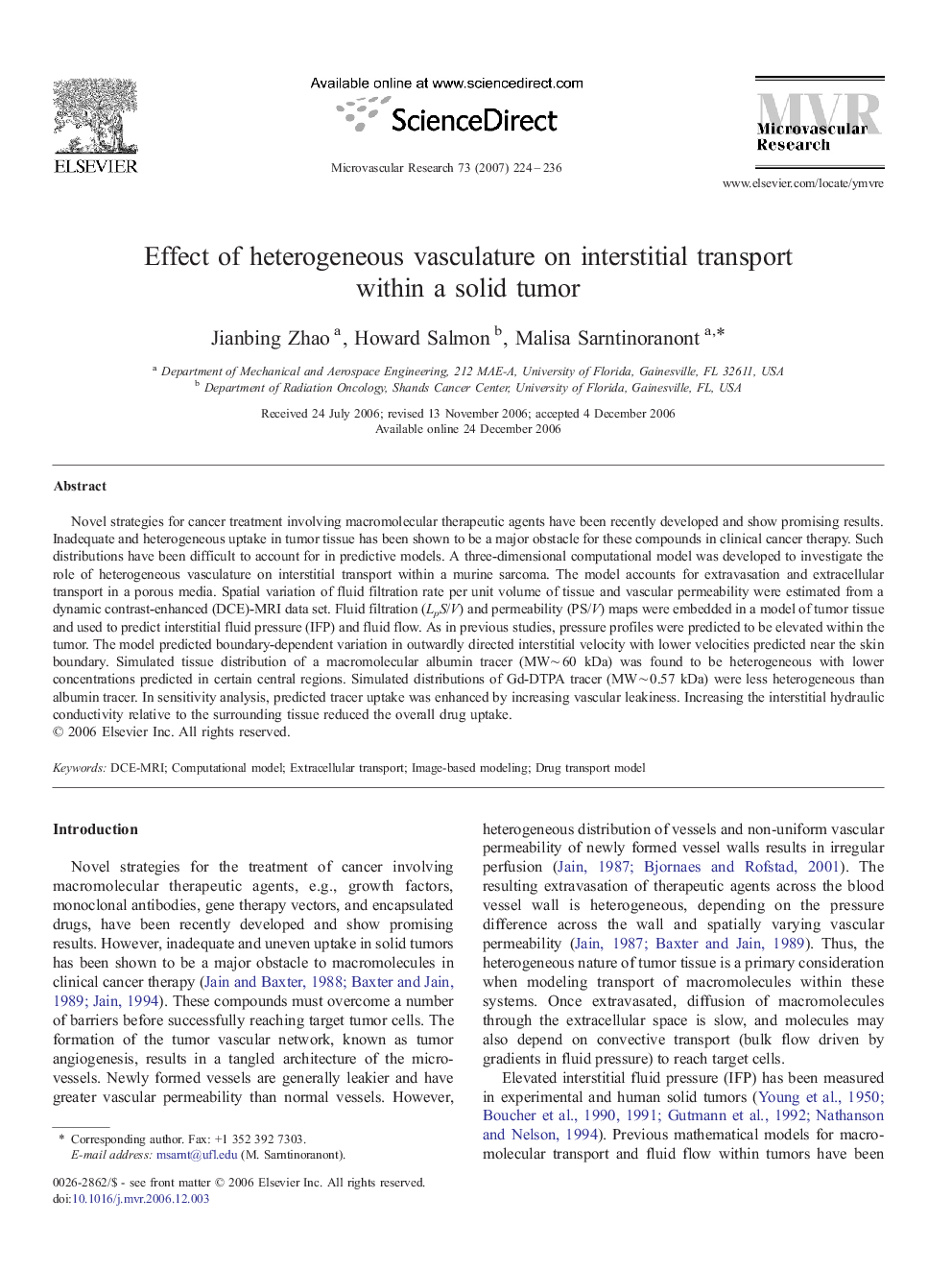| Article ID | Journal | Published Year | Pages | File Type |
|---|---|---|---|---|
| 1995504 | Microvascular Research | 2007 | 13 Pages |
Abstract
Novel strategies for cancer treatment involving macromolecular therapeutic agents have been recently developed and show promising results. Inadequate and heterogeneous uptake in tumor tissue has been shown to be a major obstacle for these compounds in clinical cancer therapy. Such distributions have been difficult to account for in predictive models. A three-dimensional computational model was developed to investigate the role of heterogeneous vasculature on interstitial transport within a murine sarcoma. The model accounts for extravasation and extracellular transport in a porous media. Spatial variation of fluid filtration rate per unit volume of tissue and vascular permeability were estimated from a dynamic contrast-enhanced (DCE)-MRI data set. Fluid filtration (LpS/V) and permeability (PS/V) maps were embedded in a model of tumor tissue and used to predict interstitial fluid pressure (IFP) and fluid flow. As in previous studies, pressure profiles were predicted to be elevated within the tumor. The model predicted boundary-dependent variation in outwardly directed interstitial velocity with lower velocities predicted near the skin boundary. Simulated tissue distribution of a macromolecular albumin tracer (MWâ¼Â 60 kDa) was found to be heterogeneous with lower concentrations predicted in certain central regions. Simulated distributions of Gd-DTPA tracer (MWâ¼Â 0.57 kDa) were less heterogeneous than albumin tracer. In sensitivity analysis, predicted tracer uptake was enhanced by increasing vascular leakiness. Increasing the interstitial hydraulic conductivity relative to the surrounding tissue reduced the overall drug uptake.
Related Topics
Life Sciences
Biochemistry, Genetics and Molecular Biology
Biochemistry
Authors
Jianbing Zhao, Howard Salmon, Malisa Sarntinoranont,
